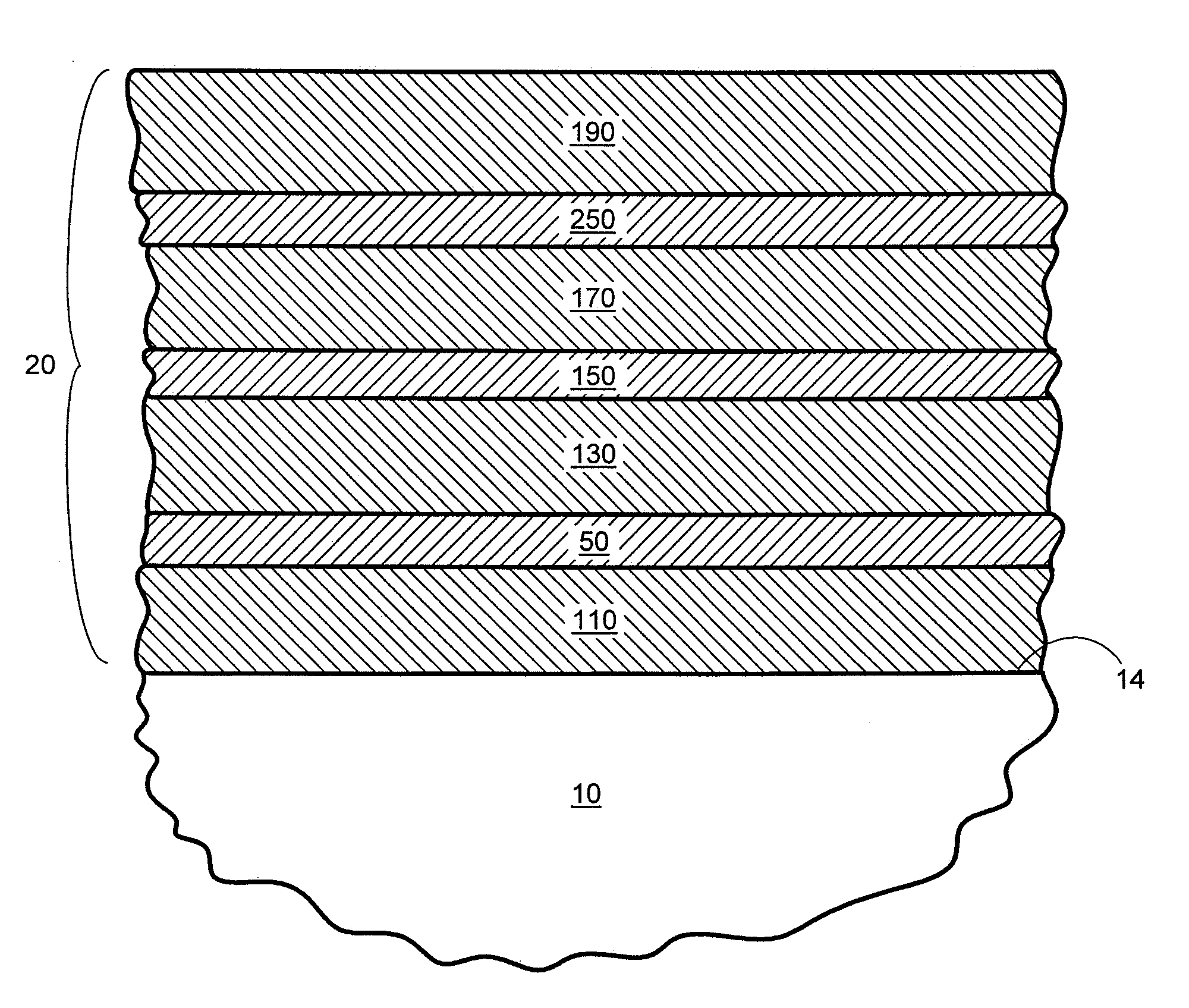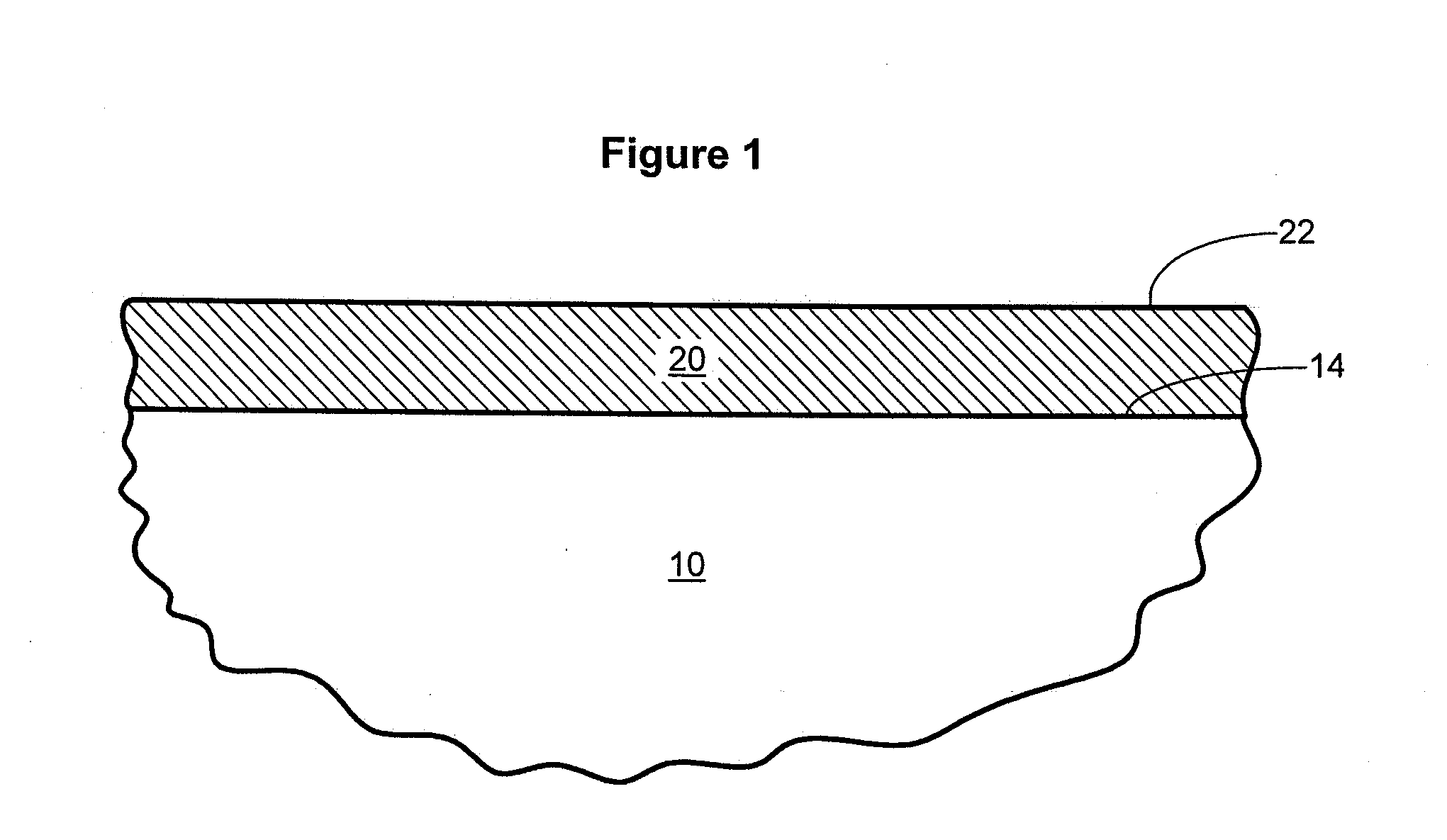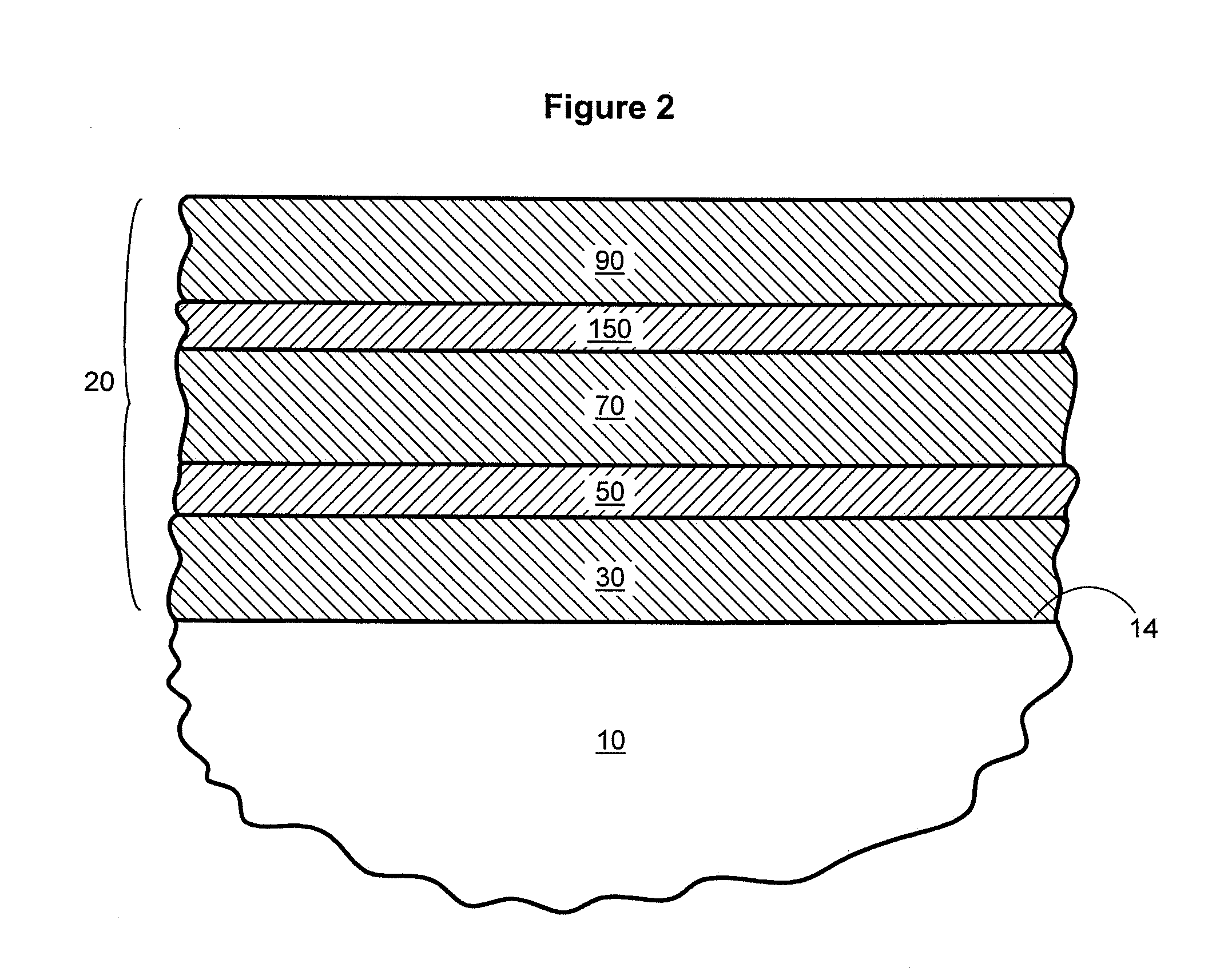Solar control low-emissivity coatings
a low-emissivity coating and solar control technology, applied in the direction of transportation and packaging, synthetic resin layered products, natural mineral layered products, etc., can solve the problems of difficulty in consistently producing low-emissivity coatings, low-shade ability coatings with low emissivity, and low-shade ability coatings with low-shade ability
- Summary
- Abstract
- Description
- Claims
- Application Information
AI Technical Summary
Benefits of technology
Problems solved by technology
Method used
Image
Examples
Embodiment Construction
[0026]The following detailed description is to be read with reference to the drawings, in which like elements in different drawings have like reference numbers. The drawings, which are not necessarily to scale, depict selected embodiments and are not intended to limit the scope of the invention. Skilled artisans will recognize that the given examples have many alternatives that fall within the scope of the invention.
[0027]FIG. 1 illustrates a substrate 10 having a surface (e.g., a major surface) 14 bearing a solar control low-emissivity coating 20. The solar control low-emissivity coating 20 exhibits advantageous shading properties. In some cases, the coating is used as both a temperable and non-temperable version of a low-emissivity coating. In such cases, the coating preferably has the same, or substantially the same, properties before and after tempering.
[0028]A wide variety of substrate types are suitable. In some cases, the substrate is a sheet-like substrate having generally o...
PUM
| Property | Measurement | Unit |
|---|---|---|
| solar heat gain coefficient | aaaaa | aaaaa |
| width | aaaaa | aaaaa |
| width | aaaaa | aaaaa |
Abstract
Description
Claims
Application Information
 Login to View More
Login to View More - R&D
- Intellectual Property
- Life Sciences
- Materials
- Tech Scout
- Unparalleled Data Quality
- Higher Quality Content
- 60% Fewer Hallucinations
Browse by: Latest US Patents, China's latest patents, Technical Efficacy Thesaurus, Application Domain, Technology Topic, Popular Technical Reports.
© 2025 PatSnap. All rights reserved.Legal|Privacy policy|Modern Slavery Act Transparency Statement|Sitemap|About US| Contact US: help@patsnap.com



